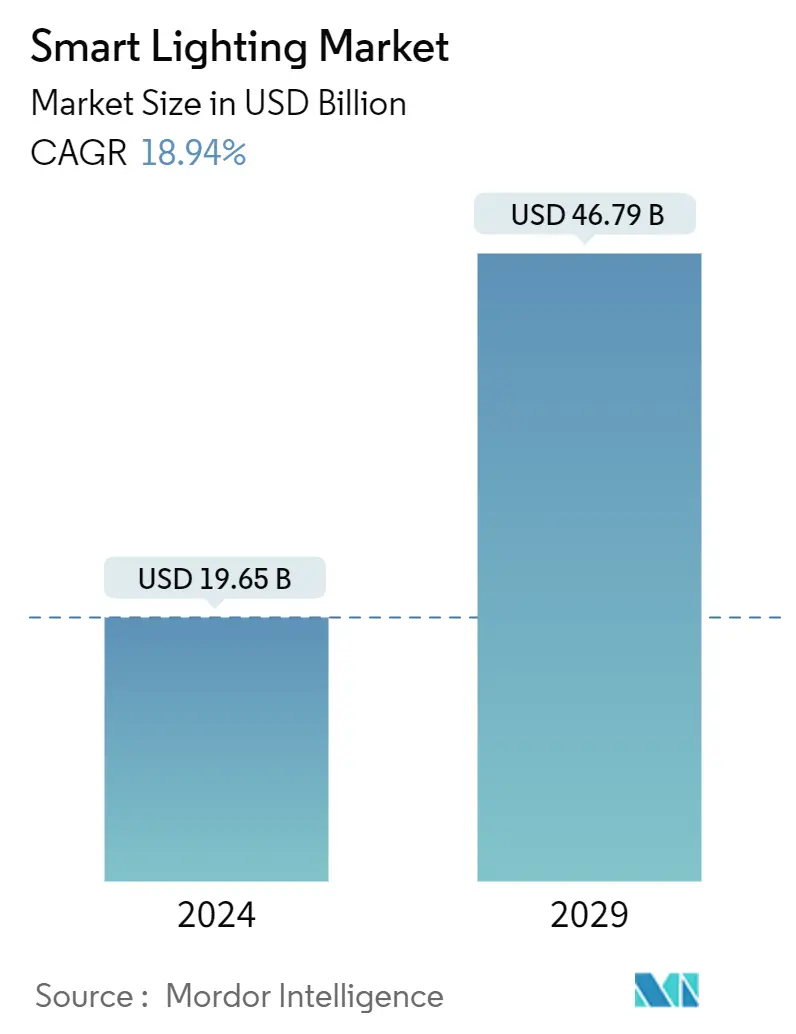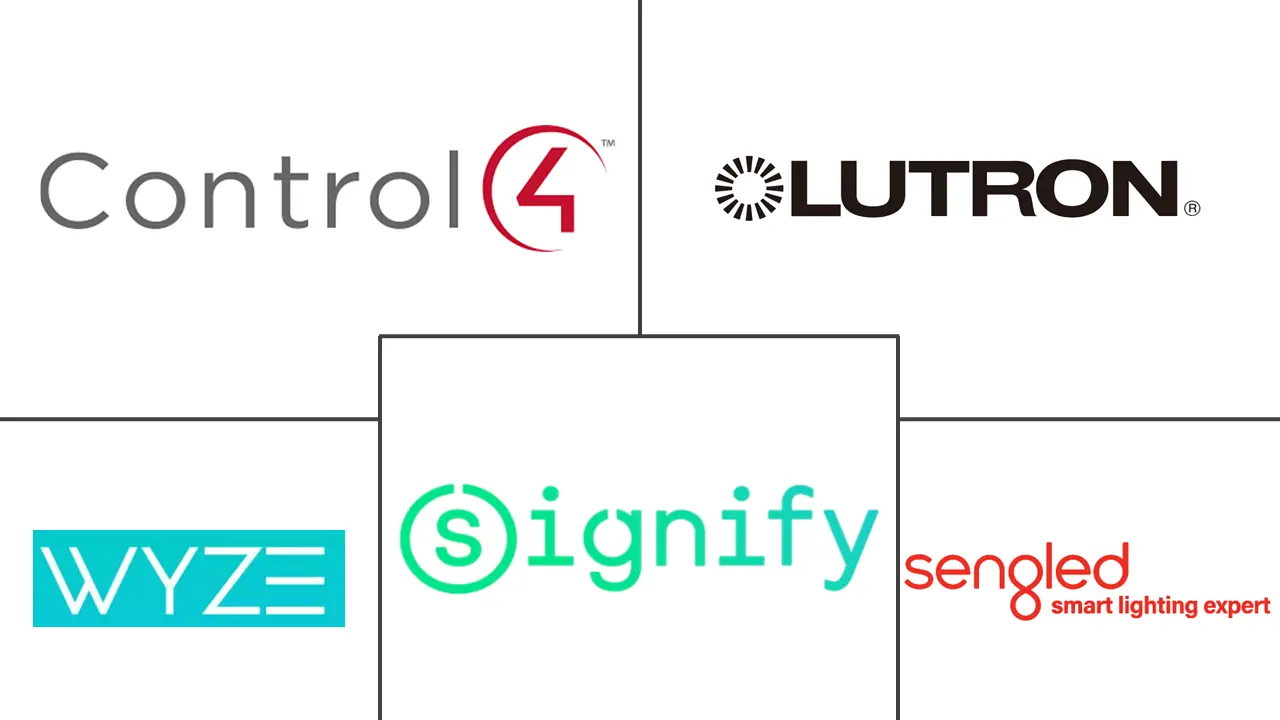Market Size of Smart Lighting Industry

| Study Period | 2019 - 2029 |
| Market Size (2024) | USD 19.65 Billion |
| Market Size (2029) | USD 46.79 Billion |
| CAGR (2024 - 2029) | 18.94 % |
| Fastest Growing Market | Asia-Pacific |
| Largest Market | Europe |
Major Players
*Disclaimer: Major Players sorted in no particular order |
Need a report that reflects how COVID-19 has impacted this market and its growth?
Smart Lighting Market Analysis
The Smart Lighting Market size is estimated at USD 19.65 billion in 2024, and is expected to reach USD 46.79 billion by 2029, growing at a CAGR of 18.94% during the forecast period (2024-2029).
Due to its societal benefits, consumers might adopt energy-efficient LED technology more rapidly, so replacing the inferior compact fluorescent or halogen lighting technologies could be accelerated.
- The popularity and demand for lights have grown in both commercial and residential spaces due to their ability to connect with IoT devices and generate a variety of ambient lighting using only smartphones or tablets. Smart lights can be dimmed with different color tones depending on the situation, schedule their on/off times, track their energy consumption, and connect to other devices via Wi-Fi, Bluetooth, SmartThings, Z-Wave, or ZigBee.
- Office spaces are also emerging as one of the common smart lighting applications. In today's business world, owners and managers are placing more emphasis on the overall well-being of their employees. By switching to smart lighting, offices can provide bright light for their employees. This helps them see better and experience less eye fatigue. Additionally, the color of the light can help brighten moods and provide comfort.
- Furthermore, favorable government regulations regarding conventional lighting and energy consumption across the United States, the European Union, China, and India are anticipated to favor the market demand for connected LED lighting.
- However, the slow growth of the smart lighting market may result in entrepreneurial challenges. The consequences of a market entry failure for producers of smart-lighting products comprise significant sunk investments and reputational damage. To address these concerns, manufacturers are finding the need to consider consumer views of smart-home technologies in general and smart-lighting products in particular.
- The emergence of COVID-19 caused a halt in production and disruption throughout the supply chain, impairing industrial output growth and reducing the capacity for light manufacturing across important manufacturing hubs. However, as people spent more time at home, they became more inclined to upgrade the interiors, which positively impacted the market. Additionally, it is anticipated that the growing use of LEDs in homes and the penetration of smart home technology will further fuel market growth in the coming years.
